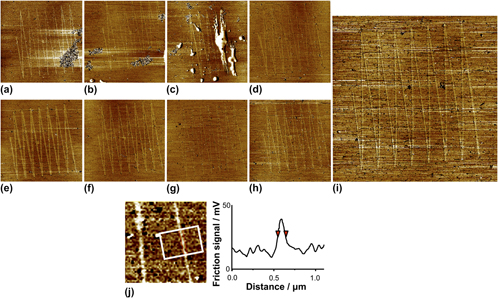Article contents
The Snomipede: A parallel platform for scanning near-field photolithography
Published online by Cambridge University Press: 25 November 2011
Abstract

Using scanning near-field lithography (SNP), it is possible to pattern molecules at surfaces with a resolution as good as 9 nm [M. Montague, R. E. Ducker, K. S. L. Chong, R. J. Manning, F. J. M. Rutten, M. C. Davies and G. J. Leggett, Langmuir23 (13), 7328–7337 (2007)]. However, in common with other scanning probe techniques, SNP has previously been considered a serial process, hindering its use in many applications. IBM’s “Millipede” addresses this problem by utilizing an array of local probes operating in parallel. Here, we describe the construction of two instruments (Snomipedes) that integrate near-field optical methods into the parallel probe paradigm and promise the integration of top–down and bottom–up fabrication methods over macroscopic areas. Both are capable of performing near-field lithography with 16 probes in parallel spanning approximately 2 mm. The instruments can work in both ambient and liquid environments, key to many applications in nanobiology. In both, separate control of writing is possible for each probe. We demonstrate the deprotection of self-assembled monolayers of alkylsilanes with photocleavable protecting groups and subsequent growth of nanostructured polymer brushes from these nanopatterned surfaces by atom-transfer radical polymerization.
- Type
- Invited Feature Paper
- Information
- Copyright
- Copyright © Materials Research Society 2011
References
REFERENCES
- 5
- Cited by




